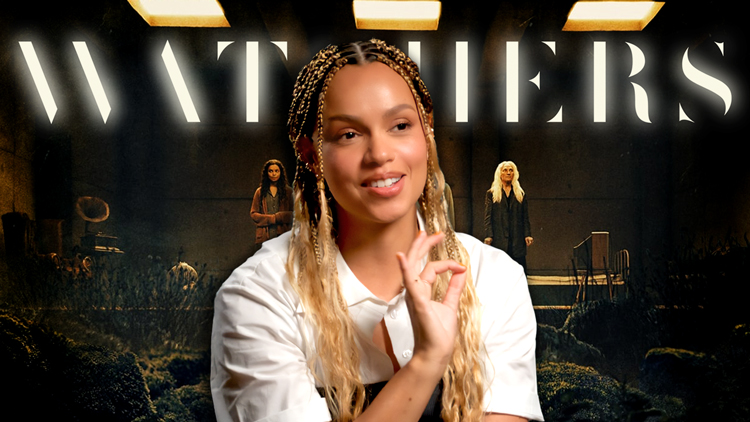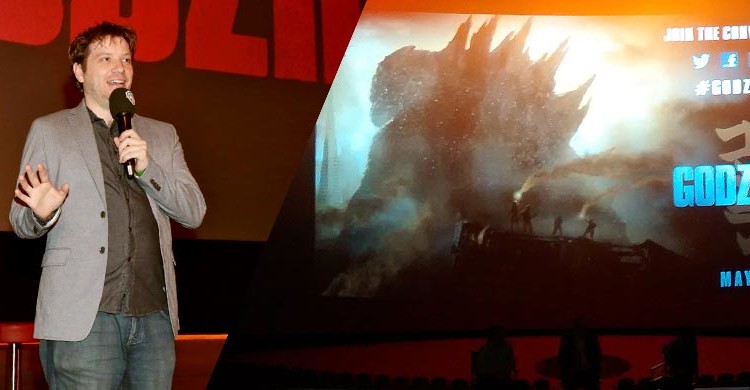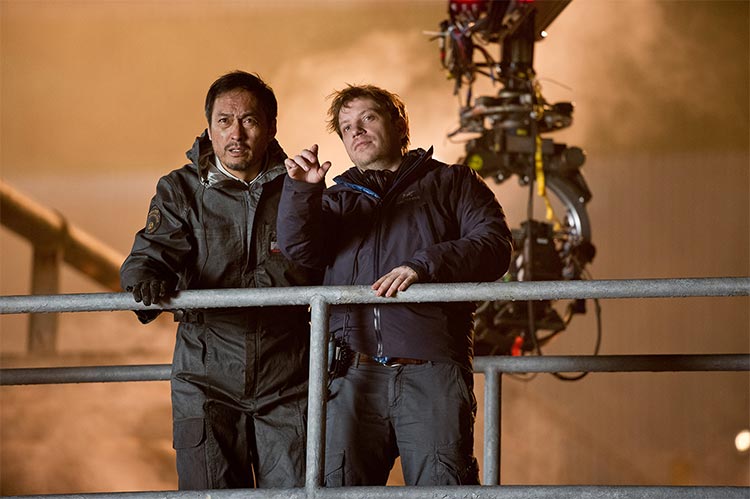Desde Hollywood was invited to the first IMAX press screenings of “Godzilla” (in theaters this Friday the 16th) at the famous Chinese Theater in early May. After the film there was a Q&A director Gareth Edwards (Monsters) and Legendary Pictures founder and producer Thomas Tull. But it was Edwards who shared the most interesting anecdotes and insights about his take on Toho giant back to life. Here is a selection of his best comments.
“There was a point where it felt like, well, maybe we shouldn’t set it in Japan, maybe we shouldn’t deal with radiation. After a while, the general consensus was the original, the whole point of that movie — and science fiction and fantasy in general, really — but the best have the opportunity to reflect the period that made them. As so as long as we did it respectfully … we decided to acknowledge those issues as we were figuring out the storyline.”
“I used to sit and look at [my illustrated encyclopedia] and think none of that has never happened in my lifetime, nothing significant has happened in my lifetime and maybe there never will be. And then in the last 10 years with all these things, it’s nearly impossible to sit down and say, ‘OK, here’s this realistic monster movie, we want to treat this like it really happened, how will people react and not be affected by the imagery of the last 10 years?’ It’s entertainment, you’re here to see a movie, but I personally like a little meat on my bones, so there’s all that imagery if you want to pull from.”
“It’s not just a once-in-a-lifetime opportunity, it’s a once-in-a-million lifetime opportunity, and the way I dealt with it was to kind of forget what we were doing. This is the ultimate monster movie of all.”
“He’s not just going to fight the Army … and he’s going to look like Godzilla, our version — those were sort of the golden rules […] We wanted to start with this thing to be feared, and he is, but we knew that as the film progressed the audience’s relationship with him would evolve and it would go from fear and hate to being interpreted, by some, as the potential to save them.”
“You write all the pros and cons to making a low-budget film and then you try to write all the pros and cons of a high-budget film, and it’s the same list but swapped over. Everything that’s really easy to do with four of you and a camera, its really hard to do with 400 of you and a line of trucks. The thing that stays true to both is the heart.”
“Films like [Jaws, Alien, Jurassic Park], you can watch and suddenly if you throw everything at the screen you have nowhere else to go and you get CGI fatigue. So what we tried to do in this movie was incrementally build and build and progress and make the film better and more worthwhile, ‘til you get to the big climax at the end.”
“We [the West] police the world and go, ‘You can’t have nuclear power. You can’t have it. But we can have it, and we have nuclear weapons’ … and what if there were a creature that existed, or creatures that were attracted to radiation?” Edwards said. “Suddenly the tables would be turned and we’d be desperately trying to get rid of that stuff, and I thought that would be a really interested scenario.”
“The original was definitely a metaphor for Hiroshima and Nagasaki and a very serious film, and so we were inspired to try and reflect that.”
The movie also stars Aaron Taylor-Johnson (“Kick-Ass”), Oscar® nominee Ken Watanabe (“The Last Samurai,” “Inception”), Elizabeth Olsen (“Martha Marcy May Marlene”), Oscar® winner Juliette Binoche (“The English Patient,” “Cosmopolis”), and Sally Hawkins (“Blue Jasmine”), with Oscar® nominee David Strathairn (“Good Night, and Good Luck.,” “The Bourne Legacy”) and Bryan Cranston (“Argo,” TV’s “Breaking Bad”).






